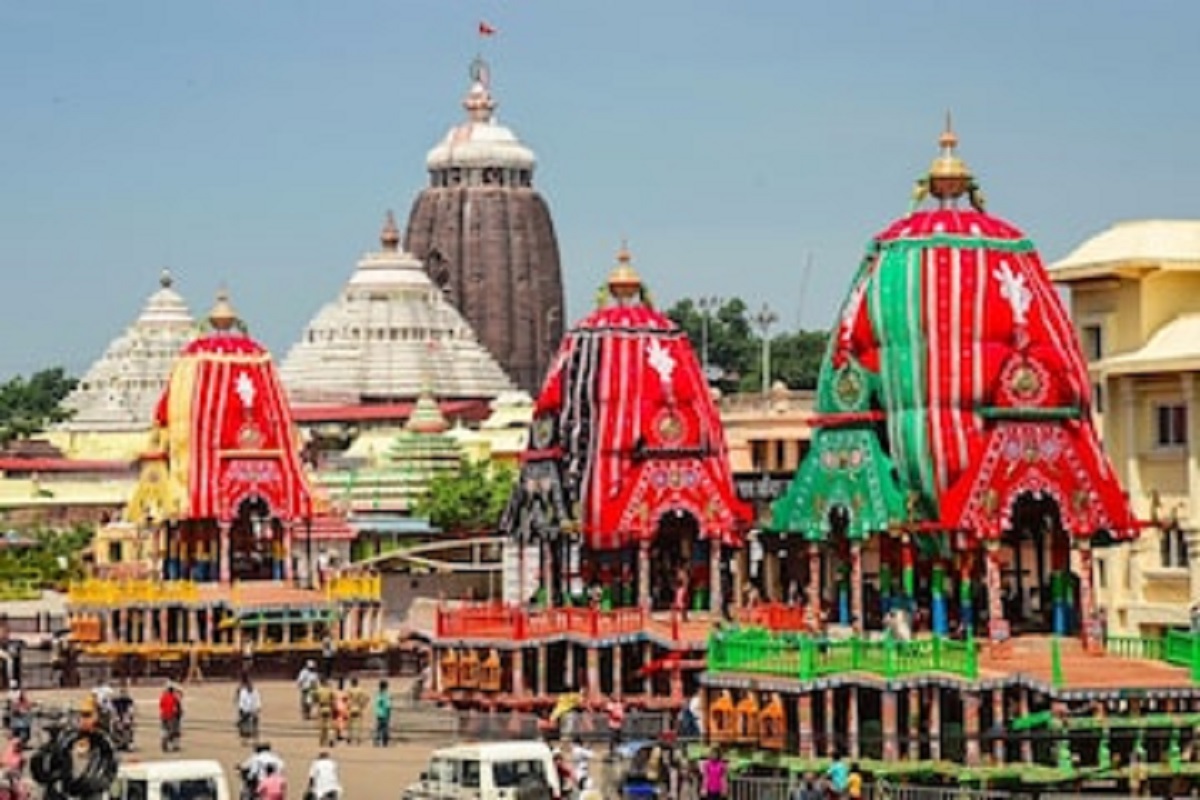The stage is all set for the grand annual Rath Yatra or the chariot festival of Lord Jagannath and his siblings, scheduled to begin on Sunday, in the holy coastal city of Puri in Odisha.
Hundreds of traditional carpenters and painters are busy giving finishing touches to the three huge chariots of the Lords.
Advertisement
“The Rath Yatra, observed on the second day of the bright fortnight of Ashadha month of the Hindu calendar every year, is the most important festival of Jagannath temple when the holy triad embarks on the annual nine-day sojourn to their birthplace, Gundicha Temple (the Yagnya Vedi or the Garden house of the Lord) around three kilometres far from the Jagannath Temple. The devotees cutting across all the sects and creeds get a glimpse of the divine siblings during the Rath Yatra,” Jagannath culture researcher, Bhaskar Mishra, told IANS.
As per the tradition, Lord Jagannath, Lord Balabadhra and Devi Subhadra fall sick after the three are bathed with 108 pitchers full of scented water during the Snan Yatra on the full moon day of the Jyeshtha month in the Hindu calendar (considered as the birthday of the Lord Jagannath).
The deities remain in seclusion and devotees are not allowed to have the darshan of the holy triad for 15 days, popularly known as the ‘Anasara’ period, when some secret rituals are performed by a particular group of servitors called ‘Daitapati’.
The holy siblings are usually offered ayurvedic herbs, fruits etc. so that they recuperate fast from fever caused due to the sacred bath. The deities after recovering fully give darshan to the devotees popularly called ‘Nava Youvan Darshan’ which is usually observed a day before the Rath Yatra.
However, this year the Nava Youvan Darshan, Netrotsav (an important ritual carried out by the priests) and Rath Yatra are falling on the same day after a gap of 53 years throwing a big challenge before the priests and the administration to complete all the rituals to ensure the pulling of chariots start by 5 p.m. on July 7.
The state government has also declared the day after Rath Yatra a holiday as the pulling of chariots will continue the next day too.
“It is a unique and rare Rath Yatra which will be celebrated for two days (July 7-8). So, a decision has been taken to declare the day after Rath Yatra as a holiday,” Chief Minister Mohan Charan Majhi announced on Tuesday.
CM Majhi during the review meeting on Rath Yatra in Puri on Tuesday sought the cooperation of all the stakeholders including servitors, district administration and the local public for smooth and hassle-free conduct of the Rath Yatra festival.
“Such a situation last occurred in 1971 around 53 years ago when Nava Youvan Darshan, Netrotsav and Rath Yatra fell on the same day. The last time the Pahandi Bije, the ceremonial procession of holy siblings along with other deities from the 12th century shrine to their respective chariots, started at 2 p.m. while the pulling of chariots started at 7 p.m. in the evening just for the sake of ritual,” senior Daitapati servitor Binayak Das Mohapatra told IANS.
“However, this time we will try hard to complete all the rituals inside the temple an hour before 1 p.m., the time fixed for the Pahandi rituals on July 7. It is also expected that more devotees will gather on Rath Yatra as they will fail to have a glimpse of the lords on Nava Youvan Darshan,” he added.









